The Smith & Wesson Single
Shot Target 1891 pistols
(1st & 2nd model)
In 1891, the firm Smith & Wesson
had in its catalogue a 5-shot revolver in 38 caliber working in single
action. This weapon is the last of the S&W “Single Action” line.
Although robust and reliable, this small revolver suffers from this
characteristic which was already outdated at the time.
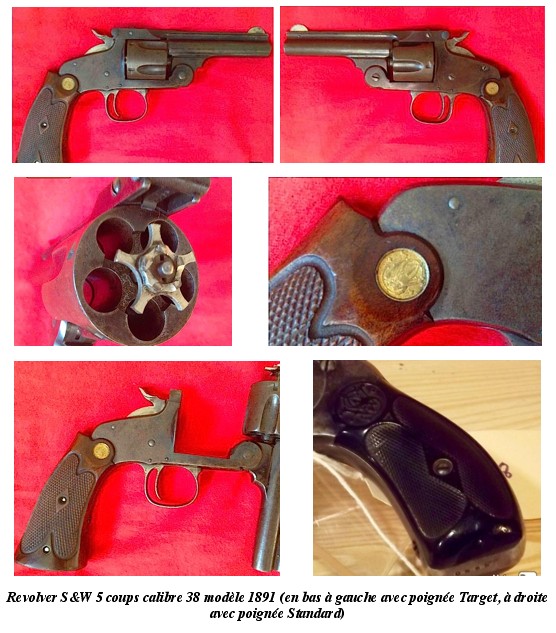
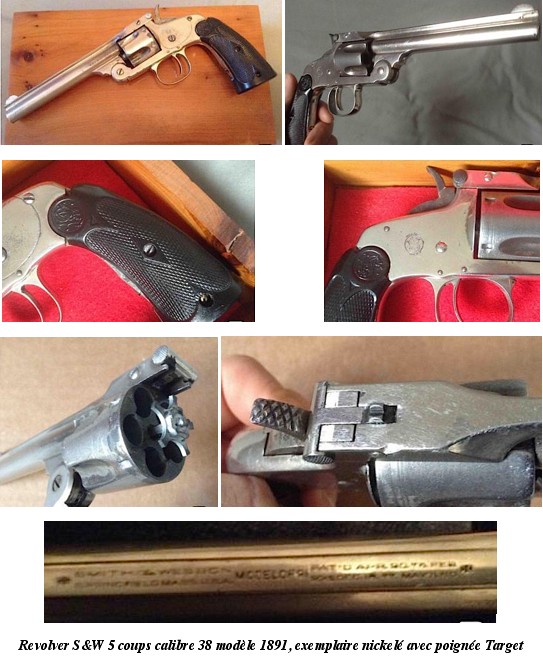
In order to sell the stock, the
firm S&W embarked on a bold and original approach consisting in
declining its revolver as a Single Shot Target pistol, producing
adaptable single-shot barrels in calibres 38, 32 and mainly 22 LR. In
addition to the potential interest of renewing the demand for carcasses
for its 38 SA revolver, this approach positions S&W in the market for
precision shotguns by competing directly on the US market with the
previously dominant firms Stevens and, to a lesser extent, Remington.
The following photo shows typical models of these brands that are still
distributed in the early 20th century.
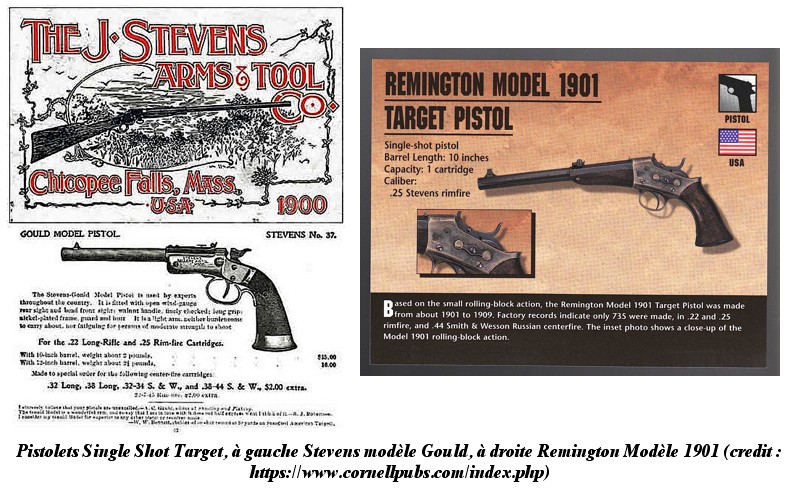
The actual commercialization did not begin until 1893. The system is presented as a “kit” in which the owner can adapt the different parts according to the intended use of the weapon. Below a very rare and superb set in box:

Many variants are available:
Standard or Target grip (extended to facilitate grip), various aiming
devices (front and back sights), barrels of different lengths (10, 8 or
6 inches, the latter being by far the rarest) and of several calibres
(38, 32 and 22LR), bronzed or nickel-plated finishes, the latter being
less common.
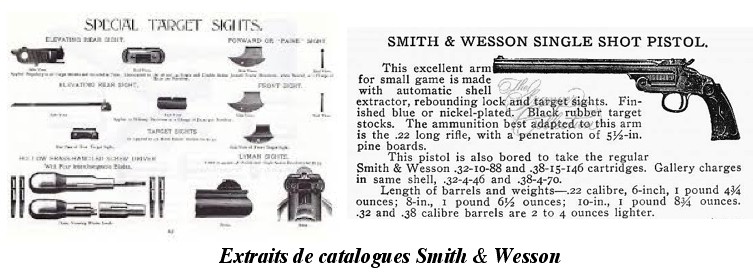

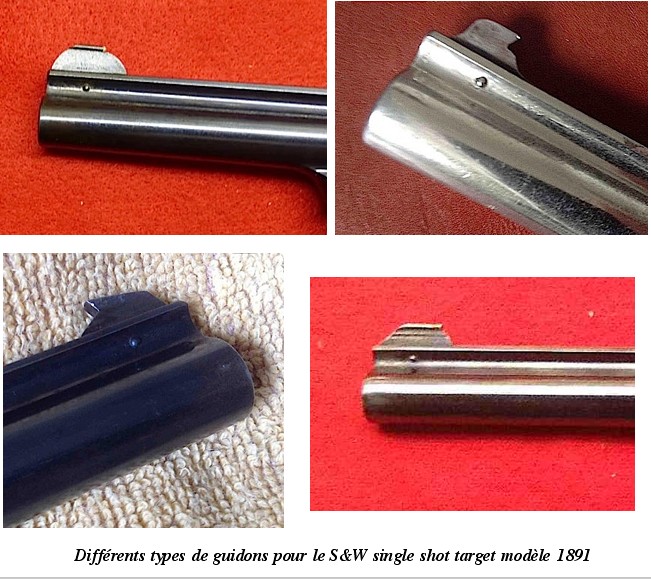

The first model retains the
features that allow it to be converted into a revolver, namely the
shields and the cylinder locking devices.
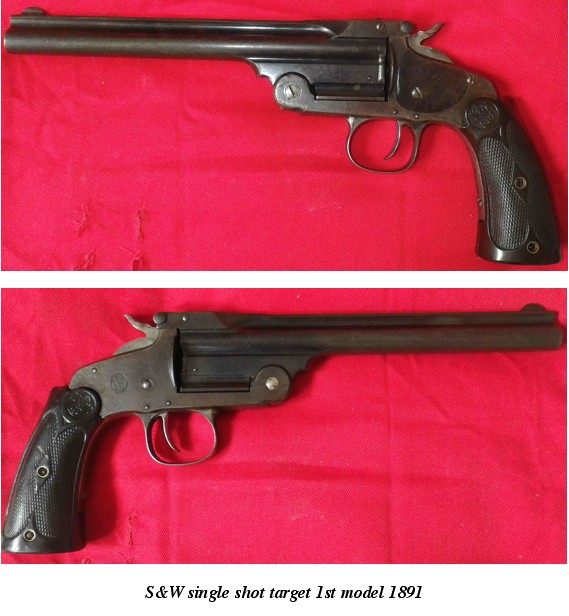
The ejection is carried out by
breaking the barrel, like the revolver, as shown in the next photo,
where the cylinder shield is clearly visible.

Target handles are available
either in grid walnut, with or without S&W gold monogram, or in
synthetic material.
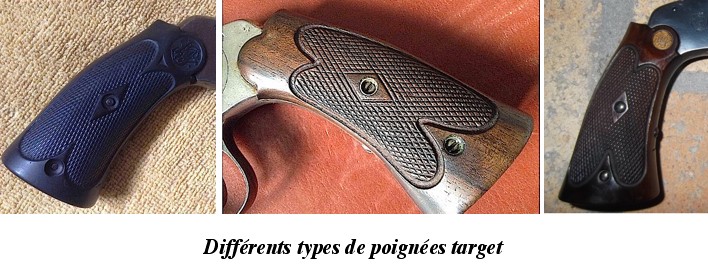
The barrel stripe bears either
the patent markings, with the words “Model of 91”, or simply the
manufacturer’s name.
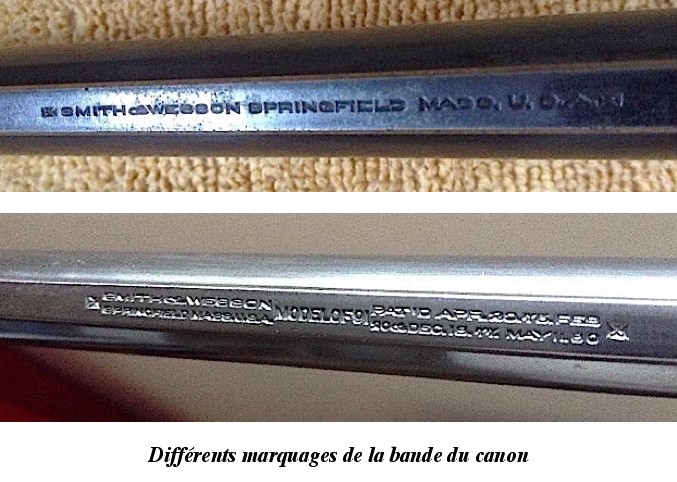
Other typical markings consist of
the S&W logo on the carcass and the calibre indication on the barrel
block.
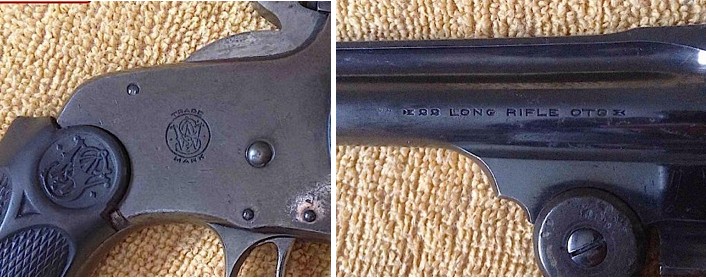
In the case of weapons directly
designed for Single Shot Target pistol adaptation, the serial number is
marked on the front of the grip to remain visible with Target-type
grips, while it is located on the heel of the handle for revolvers.

Distributed from 1893 to 1905,
the production figures of the first model are not known with precision.
According to the sources, the range is between 1250 and 1500 units, with
serial numbers ranging from 1 to 28 107. Indeed, the numbering of the
Single Shot Target is not different from that of the revolvers
themselves.
Beginning in 1905, S&W changed
its approach to abandoning the concept of a modular weapon. The new
Second Model Single Shot Target pistols are no longer convertible into
revolvers. In fact, S&W removed from the carcass of Model 1891 the
components needed for this conversion, namely the shields, the elevator
and the cylinder stop. The new pistols are immediately recognizable by
the presence of gutters instead of cylinder shields. Nevertheless, the
barrels of the two generations remain perfectly interchangeable, and it
is common to find second models mounted with a barrel bearing the
designation “Model of 91”.
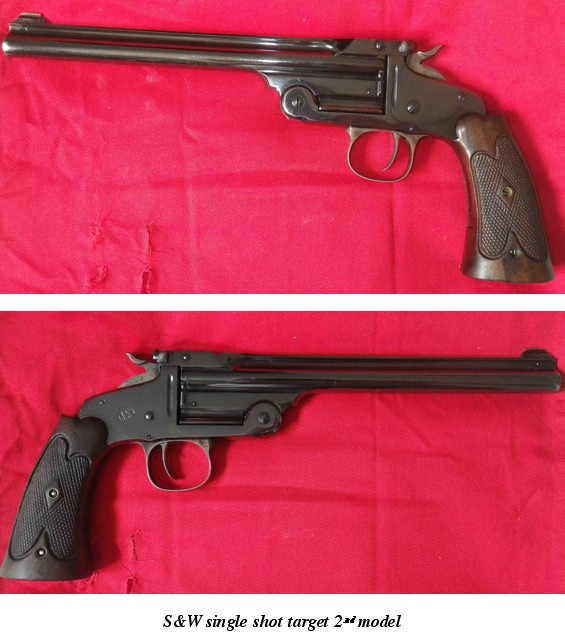

The 2nd model was produced from
1905 to 1909 with a little more than 4600 units, the last known serial
number being 4617, almost all of them being designed for the calibre
22LR to equip the sport shooters.
In 1909, when the stock of the
1891 single-action gun was exhausted, S&W relaunched its concept with
the Single Shot Target 3rd model, which was built from the carcass of
the new double-action revolver, the “Perfected Model”. As with the 2nd
type, the conversion of the Single Shot pistol into a revolver was
impossible. Moreover, there is no longer any compatibility of the parts
of this pistol with the first and second types described above. Produced
almost 7,000 units, the third model is easily identifiable by its larger
dimensions and the bridge is mass-machined rather than screwed as in the
two previous models. It should be noted that, amusingly, this pistol is
originally equipped with the dual action, a feature of doubtful interest
for a gun with one shot...

This model completes the line of
precision pistols designed from revolver carcasses. It should be noted,
however, that from 1925 S&W produced a new 22LR Single Shot pistol,
called the “Straight Line”, which would look like a semi-automatic
pistol rather than a revolver like its predecessors.

Many trophies have marked the
career of the S&W Single Shot Target, including the USA Shooting Team in
the 1910s.
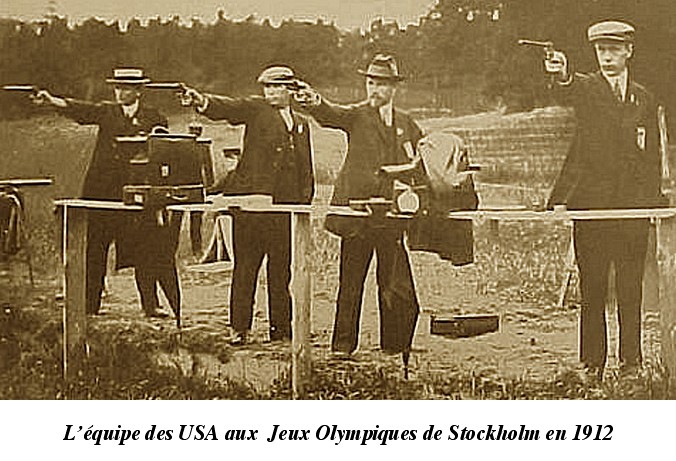
Even today, the sport shooter can
achieve remarkable scores with this line of pistols, after however
having become acclimatized to the aiming organs of another era and to an
unusual lightness compared to modern firearms (between 700 and 800 grams
depending on the model and the length of the barrel).

For more information:
These pistols are succinctly
described in many Smith & Wesson books, such as Jim Supica and Richard
Nahas' Standard Catalog of Smith & Wesson.
Jean-Christophe
Plaquevent